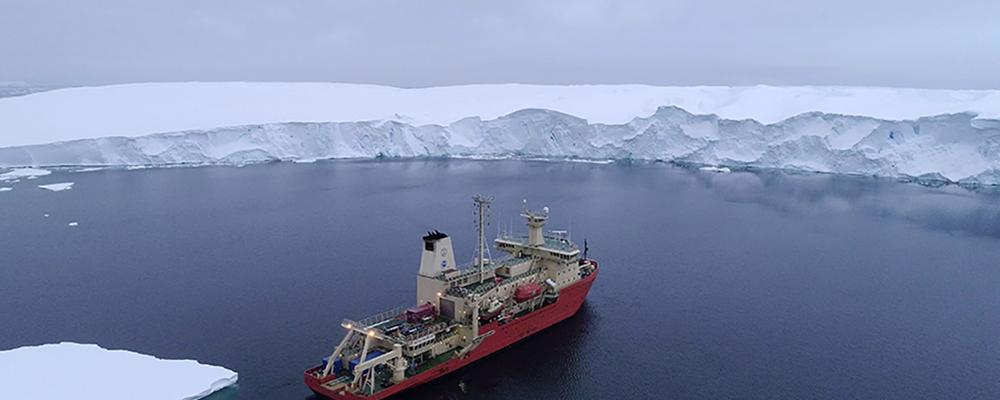New information from two research projects, where data taken from aircraft and ships, is helping researchers understand the role Thwaites Glacier will play in future sea levels. The glacier has been called the ‘Doomsday Glacier’ because it connects such large amounts of ice and melting of the ice can have such tremendous consequences.
The rate of melting has increased fivefold
Thwaites Glacier takes up an area half the size of Sweden, and its position in a deep cavity makes it sensitive to changes in the sea. Over the last 30 years, melting from Thwaites has increased fivefold and now accounts for about four per cent of total sea level rise on the planet. The research question is how much the melting could increase in the future.
“It was amazing to be able to chart channels and cave systems under the ice. The channels are deeper than expected, some over 800 metres. The channels are a critical link between the sea and the glacier. They are a likely source for warm, salty seawater to pass under the ice and reach the grounding zone where the ice rests on the seafloor,” says Tom Jordan from British Antarctic Survey (BAS), the project manager for the airborne data.
Exceptionally good ice conditions in early 2019 made it possible for the team onboard the R/V Nathaniel B. Palmer to survey over 2000 km2 of unknown surface at the front of the ice shelf. The area was previously covered by impenetrable ice and could now be surveyed for the first time. The studies show that the area is considerably deeper than researchers had previously believed and that there are more and deeper channels that lead from the sea under the ice.
“We discovered that the sea floor, which is incredibly irregular in this area, is a very good analogy for the current glacier, both in terms of formations and mineral types. By studying the patters that are formed when the ice pulled back previously in history, we will gain clues that can help numeric models and glaciologists to predict future rates of retreating ice,” says Kelly Hogan, project manager for the ship-based data collection.
Opens the way for new research
Anna Wåhlin, professor at the University of Gothenburg and co-author to the study, feels the new research findings are important for understanding the processes ongoing under the ice and for understanding how sensitive the area is for changes to sea temperature.
“By identifying the most important channels, we know where to measure ocean currents in the future and where the key areas are. It is frightening how little we actually know about this region. The models used to predict future sea level have had major errors in the input data. For example, we discovered that the deepest channel is about 400 metres deeper than previously thought. And that there are even more channels. The new dataset will also make it easier to study other aspects in the area in the future. For example, it will be possible to send autonomous underwater robots with less risk now that we have accurate maps of the seabed,” says Anna Wåhlin.
The new discoveries was published this month in The Cryosphere in two companion articles.
